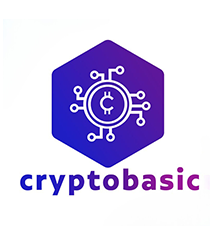
Kopalnie Krypto Team - Friday 27 October 2023
Blockchain forks - what are soft and hard forks?
Modern cryptocurrency projects are based on blockchain technology. Such networks revolutionize the approach to security issues and, more importantly, emphasize decentralization. Blockchains are susceptible to the creation of so-called forks. We have mentioned them several times in our articles. Let's see how the Chia Network team perceives them.
What is a fork in blockchain technology?
Let's start with the basics, specifically with a quick definition of a public blockchain. One could say that it's a ledger that uses consensus mechanisms to manage transactions. Each subsequent transaction causes the blockchain to expand. The blockchain itself stitches all the data in the network according to the protocol rules. But what if the network users agree to update these rules? That's when a so-called consensus fork is created.
Put simply, a fork is nothing more than a software update. It introduces changes to the blockchain, either narrowing or expanding the set of prevailing rules in the network. Regardless, all updated nodes, i.e., network members, will build the network based on a common development path.
Wait a minute! What about users who did not decide to update? Perhaps they didn't like the rules prevailing in the new version of the blockchain? Here we come to the meaning of the name "fork". Forks split one path into at least two. If one path is intended for nodes making updates, the other path is for those who decided to stick to the old rules. We'll delve into the details a bit later.
Do forks only result from updates?
At this point, it's worth mentioning that forks don't have to result solely from protocol rule updates. While usually initiated by the creators of a particular blockchain, most of them (including the Chia blockchain) have open-source code. This means that any user with programming knowledge can duplicate this code and make some changes to it, creating their set of rules. This results in another consensus fork.
Can you then create a fork of another fork? Yes, if its creator provides the source code. In most cases, however, it's better to use the original solution's code. This ensures that we're basing on the most recent and feature-rich code. However, there are situations where a particular project will be abandoned by the creators, and other users take over. In such a case, it's better to use the source code of such a fork, as its original might be very outdated. Of course, it's worth analyzing the code beforehand to ensure it's entirely safe.
Types of forks
Comparing a fork only to a software update would be quite an understatement. It turns out that changes in the blockchain can be made in two basic ways: using a soft fork or a hard fork. Generally speaking, a soft fork narrows the set of rules, while a hard fork expands it.
Soft fork
Let's start with the soft fork. It's a backward-compatible change in the protocol. This means that nodes running on the new software and those who did not decide to update, although walking different paths, can still interact with each other, maintaining network consistency. Even if the update imposes a more restrictive set of rules, the "old nodes" can still process new transactions. Updated nodes, however, will not be able to process transactions based on previous protocol versions.
Let's demonstrate that with an example. Let's say the network operates under rules A, B, C. If the community declares that rule C is incorrect but retains rules A and B, a protocol rule narrowing occurs and a soft fork is created. In this situation, users of the new version operate based on rules A and B, which were also valid before the update. This allows them to interact with the old nodes, which still "understand" rules A and B. That's the whole principle of backward compatibility.
Soft forks are typically used for minor improvements, such as transaction efficiency or security level. Implementing a soft fork mostly requires software updates by users. It should be performed as quickly as possible by as many nodes. Otherwise, network performance might suffer.
Hard fork
A hard fork is a more drastic change in the protocol. It's not backward-compatible, meaning such a fork completely severs ties with the original blockchain. Nodes that did not update the protocol become incompatible with the network and stick to the old set of rules. Users making the update create an entirely new blockchain with its standards and features. Unlike soft forks, old and new nodes walk entirely different paths and cannot interact with each other.
How does it work in practice? Let's go back to the example with rules A, B, C. If the community declares the addition of rule D, while retaining all previous rules, a hard fork occurs, and the protocol rule set expands. Rule D did not exist in the old protocol version, so nodes still using the previous version don't understand it at all, hence they cannot use the new network version. This is how an update that's not backward-compatible works.
Hard forks are considered a last resort. Why? Because they introduce significant changes to the ecosystem. It's true that they're usually desirable changes, but they mean a complete cutoff of those users who refuse the update. With a soft fork, old nodes can still support the new network version. A hard fork introduces separation, which can lead to ecosystem fragmentation.
Why are hard forks created?
The frequency of conducting hard forks in various blockchain projects can vary significantly. Some networks conduct hard forks regularly, while others avoid them like the plague, performing them very rarely. Why do hard forks happen at all? Blockchain technology is constantly evolving, so they are necessary to introduce significant improvements that allow the network to adapt to these changes.
A hard fork can add functionalities, mitigate security vulnerabilities, modify consensus, or resolve disputes within the community. However, such changes carry certain risks, such as "replay" attacks or security breaches, as well as potential cost duplication and consensus loss. Nevertheless, it should be noted that not every hard fork is risky. Conducting such an update thoughtfully can be a significant step forward in blockchain development.
How does Chia Network approach hard forks?
Chia Network has made it a habit to implement hard forks only when absolutely necessary. The project's creators have always prioritized network stability and community unanimity when making joint decisions. The creators of this innovative ecosystem approach the "health" of their network with extraordinary care, implementing all changes cautiously and thoughtfully.
Chia Network's creators do everything to ensure their proprietary ecosystem remains one of the safest, most durable, and compliant blockchains. For this very reason, a hard fork is on the horizon. It will signify a reduction in the plot filter and will come into effect in June 2024. When developing their proprietary plot format, Chia Network knew that future changes would be inevitable. While a hard fork is something the ecosystem's creators try to avoid, these changes are necessary for the network to continue evolving. Chia Network declares that they will be implemented as thoughtfully and as minimally burdensome to users as possible.
Conclusion
A blockchain fork is a significant decision that directly affects how the blockchain operates. Blockchain technology is inherently dynamic, and hard and soft forks underline its ability to adapt depending on the circumstances.
Whether we're talking about minor improvements implemented by soft forks or the complete network separation caused by hard forks, they prove that blockchain technology is resilient and has the power to create a new definition of trust in the digital age.





















